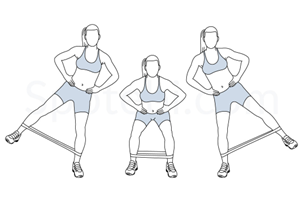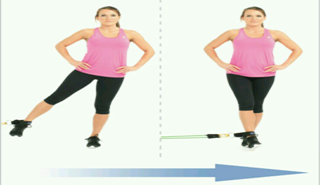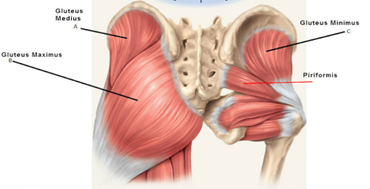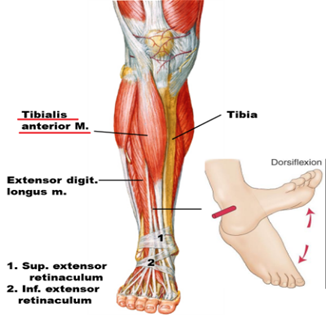This blog forms part of our Bristol Run Series support hub.
Welcome back…
Now that we’re no longer the cow in the mid pack following the herd, together let’s blank out the noise & take a moment to analyze what many runners are missing:
Leg Abduction
As the name implies if the aliens ever came to earth and took us away, they would be abducting us…(am I the only one who has these weird thoughts?) 
The hip abductor muscles include the gluteus medius, gluteus minimus, and tensor fasciae latae. They not only move the leg away from the body, but they also help rotate the leg at the hip joint, the stronger our rotators & stabilizing muscles are the less likely your knees are to become valgus (come together) when running, this valgus movement pattern is surprisingly common & responsible for many more serious ligament tears around the knee. This risk can be greatly reduced by the development of rock-solid stability by sweating the small stuff! Imagine the bigger muscles of the leg being your house and the smaller muscles being your foundation. Don’t build your house on quicksand!
Leg Adduction
 Another movement plane missed when running is adduction, essentially working the leg out to in. These exercises are specifically designed to work your inner hip and thigh muscles, adductor magnus, longus and brevis muscles along with the gracilis muscle. Exercising these muscles can again strengthen our rotators & dramatically lower your risk of an injury such as a groin pull or tear. Abduction and adduction are trained very nicely with light weight, one after the other.
Another movement plane missed when running is adduction, essentially working the leg out to in. These exercises are specifically designed to work your inner hip and thigh muscles, adductor magnus, longus and brevis muscles along with the gracilis muscle. Exercising these muscles can again strengthen our rotators & dramatically lower your risk of an injury such as a groin pull or tear. Abduction and adduction are trained very nicely with light weight, one after the other.
The Glutes
Now is a good time to mention the largest muscle group in the human body, the glutes.
Due to their primary roles as external (lateral) rotators of the hip, the Gluteus minimus, medius and piriformis get left out somewhat when running due to the continuous flexion and extension of the hip, actions primarily dominated by their big brother Maximus. Working the above exercises also target these muscles nicely, work both leg straight and knee bent at 90 degrees to get everything.
The Shins
 The Tibialis anterior/posterior, extensor longus & other primary muscles of the shin are often neglected in training programmes for runners. Runners are up on their toes most of the time engaging the main posterior muscles at the back of the leg, the soleus and the gastrocnemius (calf muscles), consequently the shins aren’t getting much love, and as a result, shins can become weak and shin splints and instability become common. Having said all this, I have seen a little knees over toes training slowly being introduced in the gym now, which is a breath of fresh air to see!
The Tibialis anterior/posterior, extensor longus & other primary muscles of the shin are often neglected in training programmes for runners. Runners are up on their toes most of the time engaging the main posterior muscles at the back of the leg, the soleus and the gastrocnemius (calf muscles), consequently the shins aren’t getting much love, and as a result, shins can become weak and shin splints and instability become common. Having said all this, I have seen a little knees over toes training slowly being introduced in the gym now, which is a breath of fresh air to see!
Inversion & eversion of the foot
 These little exercises are essential for ankle stability & the strength of our rotators. Foot position when running is fixed slightly toes down and neutral, because of the lack of lateral (sideways movement), and the ‘casts’ (trainers) we wear on our feet all day every day, the foot rarely gets an opportunity to move in these 2 planes pictured above.
These little exercises are essential for ankle stability & the strength of our rotators. Foot position when running is fixed slightly toes down and neutral, because of the lack of lateral (sideways movement), and the ‘casts’ (trainers) we wear on our feet all day every day, the foot rarely gets an opportunity to move in these 2 planes pictured above.
Great additional exercises for ankle stability include skipping, calf raises and banded work in all planes, devices or equipment that promote instability are also great. One of my personal favorites is the Bosu Ball:

If you’re lucky enough to ever come across this bit of kit, use it as much as possible!
There’s a saying amongst great coaches in the know: “In order to become stable, you need to train unstable.” Rarely are we tested on unstable surfaces anymore due to the very nature of all the flat surfaces that surround us.
Stay tuned for the third and final part of Don’t Sweat the Small Stuff which will look at stretches available for runners, as well as home massage equipment available and how to make the best use of it! See our Run Series tag for all of our Bristol Run Series related blog posts.
